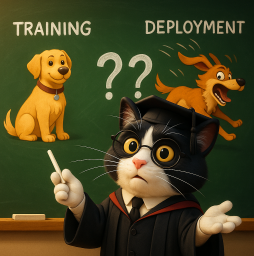
AI Safety IV: Sparks of Misalignment
This is the last, fourth post in our series...
Facial identification and verification for consumer and security applications.
Activity recognition and threat detection across camera views.
Spatial computing, gesture recognition, and gaze estimation for headsets.
Millions of identities and clothing options to train best-in-class models.
Simulate driver and occupant behavior captured with multi-modal cameras.
Simulate edge cases and rare events to ensure the robust performance of autonomous vehicles.

Together, we’re building the future of computer vision & machine learning
Facial identification and verification for consumer and security applications.
Activity recognition and threat detection across camera views.
Spatial computing, gesture recognition, and gaze estimation for headsets.
Millions of identities and clothing options to train best-in-class models.
Simulate driver and occupant behavior captured with multi-modal cameras.
Simulate edge cases and rare events to ensure the robust performance of autonomous vehicles.

Together, we’re building the future of computer vision & machine learning
Facial identification and verification for consumer and security applications.
Activity recognition and threat detection across camera views.
Spatial computing, gesture recognition, and gaze estimation for headsets.
Millions of identities and clothing options to train best-in-class models.
Simulate driver and occupant behavior captured with multi-modal cameras.
Simulate edge cases and rare events to ensure the robust performance of autonomous vehicles.

Together, we’re building the future of computer vision & machine learning
Facial identification and verification for consumer and security applications.
Activity recognition and threat detection across camera views.
Spatial computing, gesture recognition, and gaze estimation for headsets.
Millions of identities and clothing options to train best-in-class models.
Simulate driver and occupant behavior captured with multi-modal cameras.
Simulate edge cases and rare events to ensure the robust performance of autonomous vehicles.

Together, we’re building the future of computer vision & machine learning
CVPR 2022, the largest and most prestigious conference in computer vision and one of the most important ML venues in general, has just finished in New Orleans. With over 2000 accepted papers, reviewing the contributions of this year’s CVPR appears to be a truly gargantuan task. Over the next series of blog posts, we will attempt to go over the most interesting papers directly related to our main topic: synthetic data. Today, I present the first but definitely not the last installment devoted to papers from CVPR 2022.
After a long hiatus, we return from interviews to long forms, continuing (and hopefully finishing) our series on how synthetic data is used in machine learning and how machine learning models can adapt to using synthetic data. This is our seventh installment in the series (part 1, part 2, part 3, part 4, part 5, part 6), but, as usual, this post is (I hope!) sufficiently self-contained. We will discuss how one can have a model that works well on synthetic data without making it more realistic explicitly but doing the domain adaptation work at the level of features or model itself.